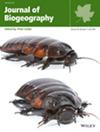Bark Type as an Indicator of Pyro-Ecological Strategy in the Eucalypts
Abstract
Aim
Eucalypt species are known for their diversity of bark types and adaptation to fire and drought. Eucalypts with stringy bark and ribboning bark are notorious for accumulating large amounts of bark fuels compared to other tree species. In this study, we examined the fire regime (fire frequency and intensity) and bioclimatic distributions of 12 contrasting eucalypt bark types, and provided maps of eucalypt bark type distributions for use in fire behaviour modelling.
Location
Treed regions of New South Wales, Australia.
Methods
We used machine learning techniques to model eucalypt bark type observations recorded in 5949 vegetation census plots. We used 79 environmental variables, and a novel fire regime categorisation to model the geographical distributions of 12 eucalypt bark types.
Results
Smooth-bark eucalypts are associated with a range of fire intensities, while eucalypts with a combination of smooth and rough bark (‘smooth with stocking’ and ‘halfbark’) are most likely to occur where fires are low intensity and rare. Smooth with stocking and halfbark eucalypts also occur more frequently in hot, dry regions than most of the rough-barked eucalypts examined. The most hazardous bark types to fire management personnel are restricted to more productive locations, defined by high water and soil nutrient availability. They are also most likely to occur where fires tend to be frequent and medium to high intensity, likely contributing to more extreme fire behaviour.
Conclusions
These results support growing evidence for bark type being a key indicator of pyro-ecological strategies. Our results provide partial support for the theory that trade-offs in investment between smooth and rough bark govern the spatial distributions of the smooth with stocking and halfbark eucalypts. However, these trade-offs do not apply universally across all eucalypt bark types. Bark types that produce large quantities of bark fuels were limited to highly productive sites. We posit that site productivity may limit the distributions of these bark types due to constraints on trunk growth rates, as trunk growth rates likely play a role in determining rates of bark fuel production.


 求助内容:
求助内容: 应助结果提醒方式:
应助结果提醒方式:


